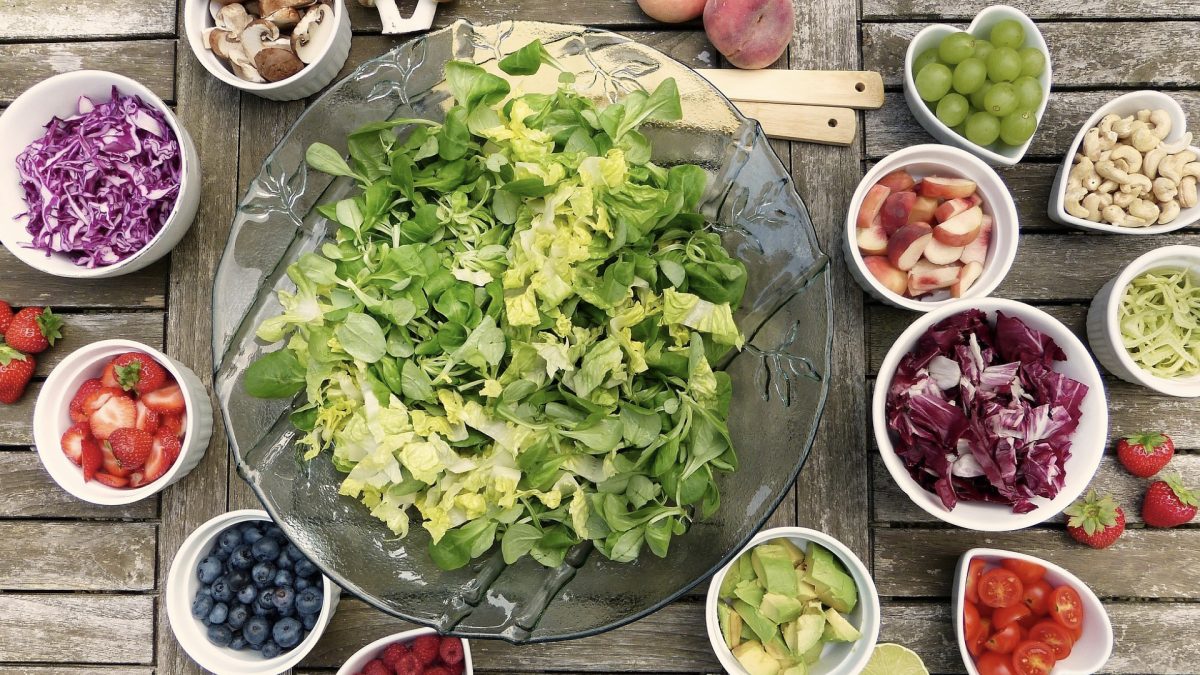There are thousands of phytochemicals that will never make it onto the side of a cereal box but may play a role in reducing the risk of chronic diseases—and those are just the ones we know about. Whole plant foods have consistently been found to be protective, so it’s reasonable for scientists to try to find the “magic bullet” active ingredient that can be sold in a pill, but “[p]ills or tablets simply cannot mimic this balanced natural combination of phytochemicals present in fruits and vegetables.” When isolated out, the compound may lose its activity or behave differently. The antioxidant and anticancer activities of plant foods are thought to derive from the “additive and synergistic effects of phytochemicals in fruits and vegetables,” meaning the whole may be greater than the sum of its parts. This helps explain why a pill can’t replace the complex combination of phytochemicals present in whole plant foods.
As T. Colin Campbell has pointed out, more than a hundred trials “overwhelmingly show no long-term benefit for vitamin supplements, along with worrisome findings that certain vitamins may even increase disease occurrence for diabetes, heart disease, and cancer.” Supplementation with fish oil, for example, appears useless or, even worse, “posing increased risk for diabetes,” yet the science doesn’t seem to matter. People continue to buy them. “The public desire for quick fixes through pills…is overwhelming, especially when money can be made.”
Each plant has thousands of different phytochemicals, as well as entirely different phytonutrient profiles. So, there may be synergistic effects when eating different foods together, too. Eating beta-carotene in carrot form is more beneficial than in pill form. because of all the other compounds in the carrot that may synergize with the beta-carotene. Well, when we dip that carrot in hummus, we suddenly have the thousands of carrot compounds mixing with the thousands of chickpea compounds. So what happens if we mix different fruits with different vegetables or different beans?
As you can see in my video Food Synergy, combining foods across different categories increased the likelihood of synergy. For example, a study showed the antioxidant powers of raspberries and adzuki beans. If there were a strictly additive effect, the expected combined antioxidant power would simply be that of the raspberries plus that of the adzuki beans. However, the observed combined antioxidant power was actually greater than the sum of one plus the other.
What about cancer-fighting effects? The study was repeated, but, this time, different combinations of food were dripped on breast cancer cells growing in a petri dish. For some foods, the same synergistic effects were found. Grapes, for example, can suppress the growth of breast cancer cells about 30 percent, but onions worked even better, cutting breast cancer cell growth in half. One would assume that if we added half the grapes with half the onion, we’d get a result somewhere in the middle between the two. Instead, the researchers found that cancer cell growth was suppressed by up to 70 percent with that combination. The whole plus the whole was greater than the sum of the whole parts. Given these findings, did the researchers recommend people eat a variety of foods? Perhaps adding some raisins along with chopped red onions to our next salad? Where’s the money in that? No, the reason the researchers were investigating the different types of interactions was “to identify mixtures that hold synergistic interactions that can ultimately lead to the development of functional foods”—maybe something like grape-flavored Funyuns.
Why should we care about the antioxidant power of foods? See
- Antioxidants and Depression
- Treating Asthma with Fruits and Vegetables
- Food Antioxidants and Cancer
- Antioxidant Rich Foods with Every Meal
- Minimum “Recommended Daily Allowance” of Antioxidants
- Antioxidants in a Pinch
- Antioxidant Power of Plants vs. Animal Foods
If you’re not familiar with this concept of reductionism, be sure to check out some of these other videos: Industry Response to Plants Not Pills, Why Is Nutrition So Commercialized?, and Reductionism and the Deficiency Mentality.
In health,
Michael Greger, M.D.
PS: If you haven’t yet, you can subscribe to my free videos here and watch my live, year-in-review presentations:
- 2012: Uprooting the Leading Causes of Death
- 2013: More Than an Apple a Day
- 2014: From Table to Able: Combating Disabling Diseases with Food
- 2015: Food as Medicine: Preventing and Treating the Most Dreaded Diseases with Diet
- 2016: How Not To Die: The Role of Diet in Preventing, Arresting, and Reversing Our Top 15 Killers
